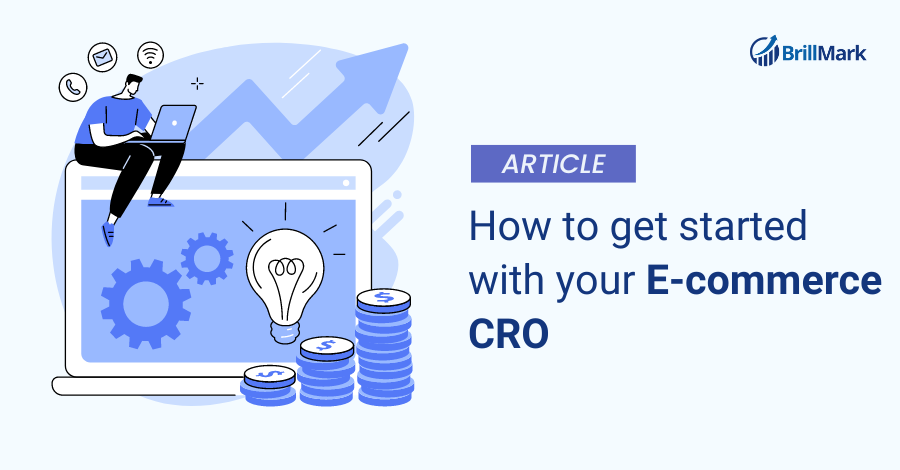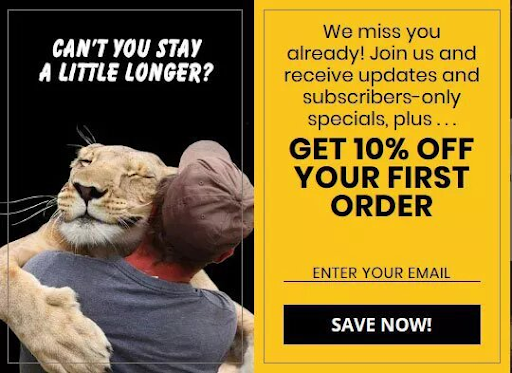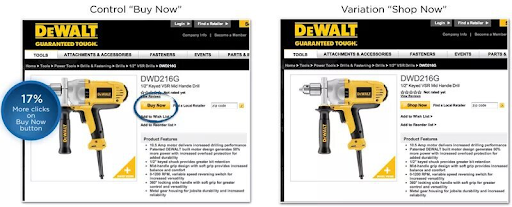You may have experienced phases of inconsistency.
Some days, there was a sudden acceleration of sales and conversion, but within a few days, there was zero growth or conversion.
You’re ready to get off this rollercoaster, right?
Initially, you might wonder, “what are we missing?“
Have other possible avenues been left unexplored? Should you get a second eCommerce guru?
In all honesty, increasing the amount of money spent on advertisements and opening additional distribution channels isn’t always the best strategy.
First, you need to have a look at your website.
Learn your site’s conversion rate before you chase new and better channels.
The practice of conversion rate optimization (CRO) has been around since the early 2000s and is a fantastic technique to enhance your eCommerce store’s performance in every area.
At Brillmark, before working on any ecommerce site, we always tell our clients that doing a CRO audit for the website is the priority.
Our years of experience have taught us that before jumping straight to revamping the site, we should focus on more minor variables, as they play a huge role in conversions.
In this article, we will tell you how Brillmark works to get started with ecommerce CRO for our clients.
Let’s jump right into it!
What is Ecommerce CRO?
Conversion rate optimization (CRO) refers to making and testing modifications to your website and marketing tactics to raise the rate at which people make purchases.
Conversions on e-commerce sites don’t always mean money changed hands; conversions may also be newsletter signups, file downloads, or user reviews.
Why is Ecommerce CRO Important?
Conversion rate optimization (CRO) is crucial for online stores since it usually results in more sales.
As a revenue growth strategy, Ecommerce CRO is also relatively cheap.
Instead of increasing traffic, you can optimize the experience for the people already visiting your site.
Subtle adjustments can provide significant gains in revenue.
For example, reducing the number of form fields on a page will streamline the conversion process and boost revenue at almost no extra expense to your company.
Is it Worth Investing In Conversion Rate Optimization?
Why should you put money into increasing your conversion rate?
Let’s demonstrate the benefits of concentrating on conversion rate optimization for your company.
In this example, pretend that your average order value (AOV) is $100 and that you sell coffee beans.
A 1% conversion rate on 30,000 unique monthly visits is respectable.
How many monthly clients would you expect to have if this were the case?
Conversions to paying clients = 30,000 X 0.001 = 300
Earnings = $30,000 ($300 X $100)
So, let’s imagine you’ve got a Google Ads guru on staff who drives half of your visitors.
He is responsible for half of your income since he brings in $15,000 monthly sales.
Imagine if you could double your current conversion rate from 1% to 2%.
Let’s figure out the results.
Conversions to paying clients = 30,000 X 0.02% = 600
Earnings = $60,000 ($600 X $100)
By boosting your conversion rate, you’ve effectively quadrupled your earnings.
In addition to seeing a 100% increase in revenue, your PPC man is also receiving preferential treatment from Google regarding ranking and visibility (because of the higher conversion rate).
You’ve finally reached financial success and can finally relax.
With this newfound wealth, you may expand your company’s reach by employing a dedicated social media manager.
Metrics to measure Ecommerce CRO
Your store’s conversion rate isn’t the only indicator that matters when talking about conversion.
Any improvement in these indicators should increase your store’s conversion rate.
Bounce Rate
The term “bounce rate” refers to visitors who only look at one page before leaving the site.
When customers quickly leave your online shop after arriving, it’s a sign that they aren’t finding what they need.
Exit Rate
Users who read a page and then depart are counted as having an exit rate, which is sometimes misunderstood as the bounce rate.
Exit rates reveal the last page that people visited before leaving your site.
One statistic you may try to influence with landing page optimization is the exit rate, which indicates how many visitors leave the page without converting.
Click through Rate (CTR).
The CTR measures how many people clicked on your ad or email link to visit your website.
A common goal of optimizing AdWords or email marketing campaigns is to increase the number of visitors who visit the website, purchase, perform other desired actions, or interact with the brand on social media.
Average Session Duration
When measuring user engagement, one statistic to consider is the average session time, which provides a rough estimate of how long users spend on your site on average.
Visitors aren’t remaining around long enough to convert if the bounce rate is high.
Pages Per Session in Google Analytics
An engagement statistic known as “average page depth” might reveal the total number of pages a potential customer saw before giving up and departing.
Total page views per session time is the parameter being measured here.
Remember that a higher number of page visits may indicate increased engagement and that your conversion funnel is unclear.
How to get started with Ecommerce CRO
Setup
This is the first step you should take if you don’t already have tools to monitor conversions.
One of the most well-known conversion tracking tools is Google Analytics.
There are many other options out there to track conversion.
Make sure that your tools are tracking the proper conversions.
Brillmark is here to help if you’re having trouble deciding on or implementing a conversion-tracking solution.
Audit the data & Information.
Optimization efforts for conversion rates must always be evidence-based.
To determine if your site’s conversion rate has increased, you need to know the current rate and the actions people take while on it.
It’s unclear how such a modification would affect future conversion rates.
To increase profits, your CRO strategy must be data-driven at every stage.
This is the process that the leading eCommerce companies use when making choices.
It’s essential to note that CRO won’t help if your marketing efforts aren’t generating enough interest at the top of the funnel.
Pay attention to the top of the funnel.
There’s not much use in focusing on conversion rates if no one is visiting your site.
To begin, check that you are gaining traffic and that a sufficient number of your visitors are making it to your category and product pages.
Conversion Rate Optimization is useless if you don’t have many people clicking through your funnel.
Modify your existing category pages
User feedback should be featured. Don’t forget the effectiveness of user-generated content, influencer photos, and videos!
Reducing the options available for each subcategory and the overall navigation menu is ideal.
Adopt better practices for your product pages.
Take advantage of eye-catching product photography. You are promoting your business by showcasing both customer and influencer-generated media.
Use a film of your product as the primary picture. Put a “certified” seal on the hero picture of your product.
Show customer feedback for each item. Always put as much detail as possible on the product you are selling.
Help customers complete their purchases.
Once you’ve worked to improve your top-of-funnel conversion rates, it’s time to examine your cart abandonment rates.
How many visitors add items to their shopping basket but abandon them before making a purchase?
Evaluate the shopping cart page and checkout procedure to see if there’s anything you can do to enhance them.
Focus on the cart, and its accompanying “add to cart” button first, then review the rest of the checkout process to see where you can cut down on steps.
See where visitors are clicking and what content is drawing the most attention all at once with the help of heat maps.
Pay attention to the customer’s needs.
Start when a user clicks on your link and follow them through the entire buying process until the final confirmation email.
Focus on their add-to-cart experience and add only the essential items.
Multiple payment options are a big yes!
Once you have collected all the information above, identify what is most helpful for your business.
The next step is to start the A/B test.
Start A/B test
Testing is one of the online store’s most critical conversion rate optimization (CRO) strategies.
Although you may utilize competitor sites to gather inspiration, you should always run your tests before implementing any new CRO strategies.
Attempt new CRO strategies by using A/B testing.
There are many A/B testing tools out there, but choosing the best out of them is much more complex.
We have a list of A/B testing tools we suggest for our clients, like Google Optimize, Convert Experiences, Optimizely, etc.
To conduct an A/B test, two versions of a page are made and shown to two separate groups of visitors.
You might, for instance, include a call to action (CTA) for a free trial on one version and a free quotation on the other.
Maintain a tally of how well each page variant does in the eyes of your visitors and customers.
Then, after determining the best course of action, you may move on to experimenting with other features.
Top 10 Ways to Boost Your Ecommerce Conversion Rates.
Upload high-resolution photos and videos to the product pages.
Consider what it is that would make your shopping experience more enjoyable.
You can’t try on clothes or touch the items before buying them online.
The most incredible way to ensure a satisfied consumer is to provide specific and detailed photographs or videos of your product.
Better conversion rates may be achieved by including high-quality photographs and videos on product pages, which help visitors imagine the things they are interested in purchasing.
Get creative with the “no” button on your popup.
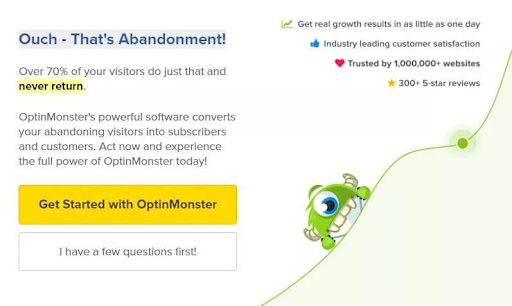
You can spice up your popup with more than just a simple Yes or No button.
The no button may say something like “I detest getting more leads,” a psychological tactic that may or may not go over well with your target demographic.
Luckily, a more subtle and practical approach will get your customer’s attention.
The truth is that visitors are leaving your site because they can’t find what they’re looking for.
Think of a clever way to tell them more about your goods.
Make use of justifications based on psychology.
Validation is a beautiful psychological approach that increases the user’s likelihood to convert.
The service Airbnb has implemented this quite effectively.
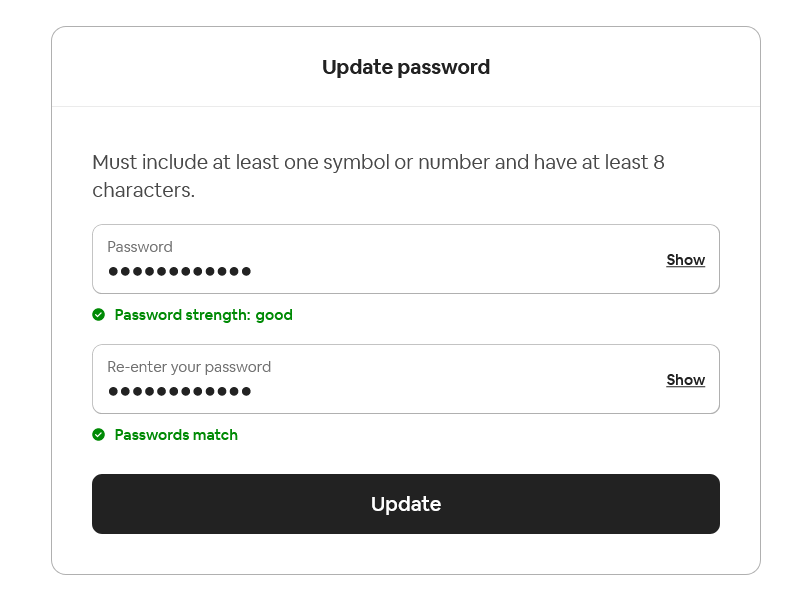 When the user enters a secure password, the password field turns green, and the other areas become active for input.
When the user enters a secure password, the password field turns green, and the other areas become active for input.
Even though it’s a little tweak, Airbnb has included it into their larger CRO and UX strategy.
Integrate exit intent pop-ups into your website design.
Exit intent popups are an even more powerful method of converting site visitors into leads.
These pop-ups are even more potent because they appear just as a visitor is ready to leave your site.
Free delivery.
Amazon has set a standard for online shopping that customers have come to anticipate.
Today’s consumer expects every purchase to come with free delivery.
Customers will shop elsewhere if your store doesn’t provide free delivery.
To offset the expense of transportation, product prices might be raised as an alternative to offering free shipment.
However, consumers today are wise; if your prices are too high, you will lose business to competitors.
You may try different grid sizes and arrangements.
The design of your category pages is an essential part of any website.
Whether you show three or four things, each row appears to be a minor detail.
Up until they tried it, that was Smartwool’s assumption, too.
One item was more prominent in their skewed control version than the others.
They created a regular grid and made all the goods the same size as their variant.
Revenue per user has increased by 17% as a result of this tweak.
Offer discount codes that expire after a certain period.
Produce promo codes or coupons that consumers may use at checkout to receive a discount of a specific dollar amount or a percentage off their order.
Customers will feel compelled to make a quick decision when they see that your discount code is about to expire.
Competitive Pricing
Selling well-known brands that are carried by a wide variety of competitors means setting your prices at or below the market norm.
Make repeated pricing changes to find what works best.
The amount someone is prepared to pay is determined mainly by the quality of your marketing and visuals.
To generate income, you must market your brand to a sizable consumer base using targeted language and visuals.
Adjust the wording of your call-to-action buttons.
Your site’s call to action button should be your top priority for optimization. We will discuss a variety of commonly used call-to-action buttons.
Consider the time DeWalt experimented with renaming their “Buy Now” button “Shop Now.”
They saw an increase in clicks of 17% after making this tweak.
Make your site mobile-friendly.
We can’t stress how often we come across sites without regard for their mobile visitors.
Recent research indicates that mobile consumers account for 54% of all eCommerce sales.
You must ensure that your site displays correctly on desktop, mobile, and tablet computers by completing thorough cross-device testing.
Conclusion
Now that you understand the foundations of CRO, it’s time to put your knowledge to use by optimizing your site.
Successful site optimization can be broken down into three simple steps:
- Set up a reliable A/B test by consulting the data.
- Get the correct equipment.
- Employ the appropriate CRO tactics on your website.
Your user data and the actions of your consumers on your e-commerce website and brand are the most critical factors.
If you are at a loss for what to do next, send a simple poll to your customer and ask for their thoughts.
Your clientele doubles as your finest sales force.
If you want more visitors to become paying customers, use our suggestions to widen your conversion funnel.
And if you don’t know where to begin, whether you want assistance with A/B testing, building, or setup, reach out to us.
Our experts can help your group reach new heights of performance.
For over a decade, businesses that value specialist testing resources have trusted us to oversee their testing.
Get in touch with us whenever you’re ready to satisfy your curiosity.











